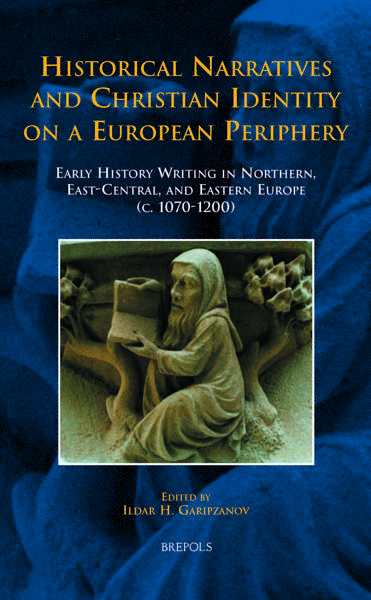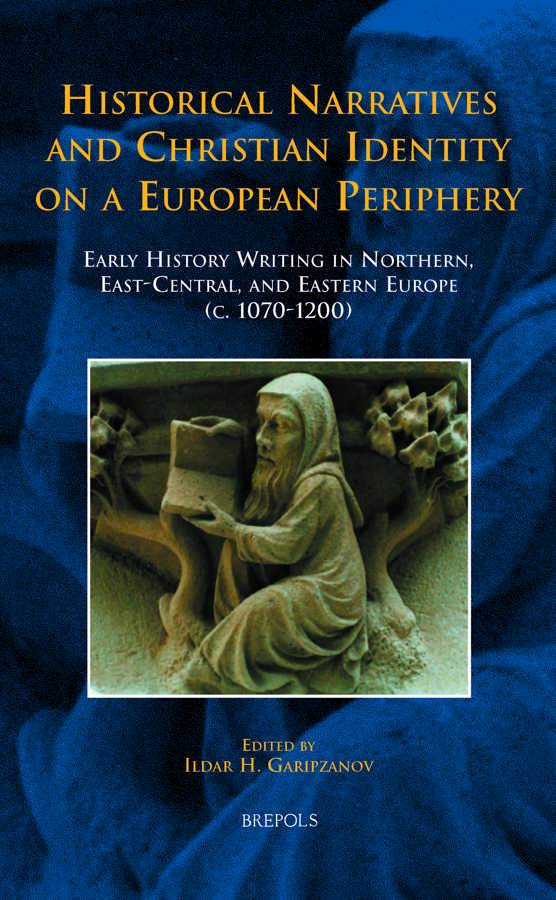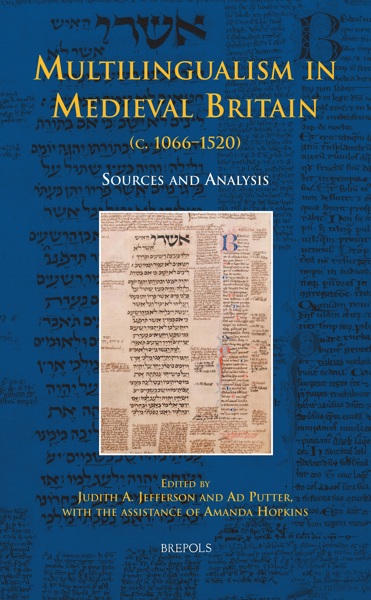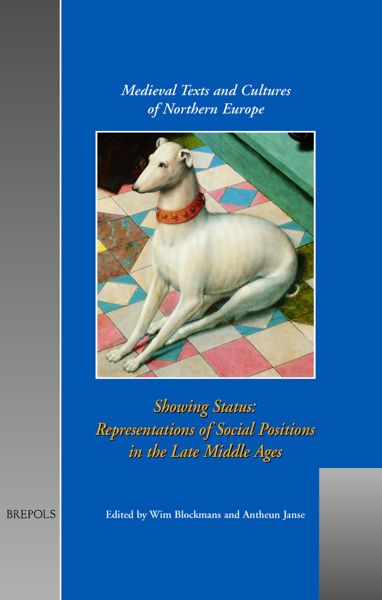
Historical Narratives and Christian Identity on a European Periphery
Early History Writing in Northern, East-Central, and Eastern Europe (c.1070–1200)
Ildar H. Garipzanov (ed)
- Pages: 292 p.
- Size:156 x 234 mm
- Language(s):English
- Publication Year:2011
- € 90,00 EXCL. VAT RETAIL PRICE
- ISBN: 978-2-503-53367-4
- Hardback
- Available
- € 90,00 EXCL. VAT RETAIL PRICE
- ISBN: 978-2-503-53974-4
- E-book
- Available
This volume presents the first comprehensive overview of the main early historical narratives created on Europe's northeastern periphery between c. 1070 and c. 1200. It particularly focuses on their role in constructing Christian identity in the first centuries after conversion.
"The contributions clearly show the importance of the concrete political and cultural setting in which the historiographers under consideration were shaping their pictures of the past. (...) The book presented here provides enough materials for ongoing discussions." (Anna Adamska, in: The Medieval Review, 12.08.10)
This volume presents the first comprehensive overview of the major early historical narratives created in Northern, East-Central, and Eastern Europe between c. 1070 and c. 1200, with each chapter providing a short introduction to the narrative in question. Most chapters are written by established experts in their fields, who have published critical editions of the discussed narratives, their English translations, or analytical works dealing with early history writing in corresponding regions. However, the volume is more than just a summary of various narratives. Despite being written in such different languages as Latin, Old Norse, and Old Church Slavonic, these narratives played similar roles for their reading audiences, in that they were crucial in the construction of Christian identity in the lands recently converted to Christianity. The thirteen authors contemplate the extent to which this identity formation affected the nature of narrativity in these early historical works. The authors ask how the pagan past and Christian present were incorporated in the texture of the narratives, and address the relative importance of classical and biblical models for their composition and structure. By addressing such questions, the volume offers medievalists a coherent comparative study of early history writing in the peripheral regions of medieval Europe in the first centuries after conversion.
Introduction: ILDAR H. GARIPZANOV, 'History Writing and Christian Identity on a European Periphery'
1. ILDAR H. GARIPZANOV, 'Christianity and Paganism in Adam of Bremen’s Narrative'
Part One: Early Scandinavian Historical Narratives in Latin
2. MICHAEL H. GELTING, 'Two Early Twelfth-Century Views of Denmark’s Christian Past: Ailnoth and the Anonymous of Roskilde'
3. LARS BOJE MORTENSEN, 'Historia Norwegie and Sven Aggesen: Two Pioneers in Comparison'
4. SVERRE BAGGE, 'Theodoricus Monachus: The Kingdom of Norway and the History of Salvation'
Part Two. Early Scandinavian Historical Narratives in Old Norse
5. THEODORE M. ANDERSSON, 'The Two Ages in Ágrip af Nóregs konunga sǫgum'
6. ELSE MUNDAL, 'Íslendingabók: The Creation of an Icelandic Christian Identity'
7. JONAS WELLENDORF, 'Whetting the Appetite for a Vernacular Literature: The Icelandic Hungrvaka'
Part Three. Early Historical Narratives in East-Central Europe
8. ZBIGNIEW DALEWSKI: 'A New Chosen People? Gallus Anonymus’s Narrative about Poland and its Rulers'
9. JÁNOS M. BAK, 'Christian Identity in the Chronicle of the Czechs by Cosmas of Prague'
10. LÁSZLÓ VESZPRÉMY, 'More paganismo: Reflections on the Pagan and Christian Past
in the Gesta Hungarorum of the Hungarian Anonymous Notary'
Part Four. Early Historical Narratives in Eastern Europe
11. OLEKSIY P. TOLOCHKO, 'Christian Chronology, Universal History, and the Origin of Chronicle Writing in Rus’'
12. DONALD OSTROWSKI, 'Pagan Past and Christian Identity in the Primary Chronicle'
13. TIMOFEY V. GUIMON, 'Christian Identity in the Early Novgorodian Annalistic Writing'
Index




